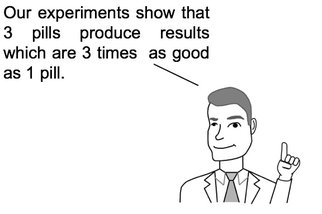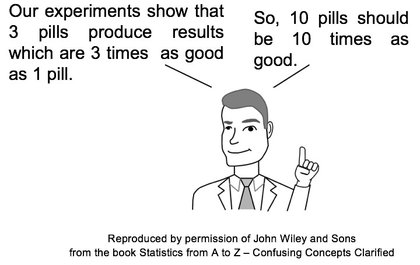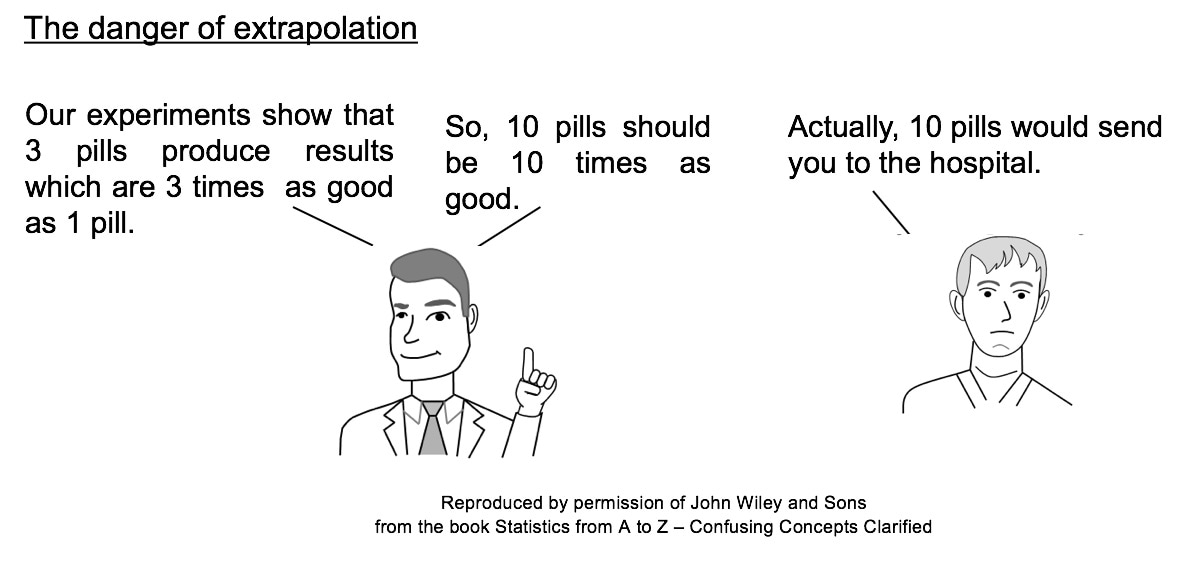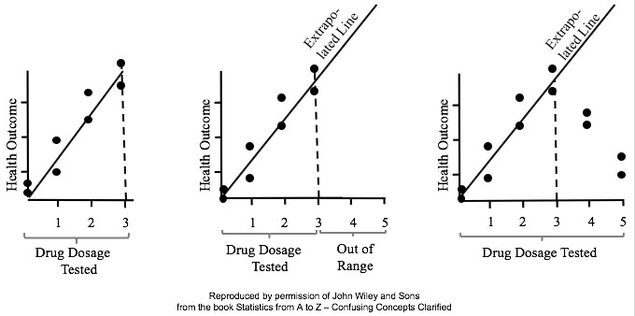Statistics Tip of the Week: Don't extrapolate your conclusions beyond the range of your data.1/5/2017 In Regression, we attempt to fit a line or curve to the data. Let's say we're doing Simple Linear Regression in which we are trying to fit a straight line to a set of (x,y) data. We test a number of subjects with dosages from 0 to 3 pills. And we find a straight line relationship, y = 3x, between the number of pills (x) and a measure of health of the subjects. So, we can say this. But we cannot make a statement like the following. This is called extrapolating the conclusions of your Regression Model beyond the range of the data used to create it. There is no mathematical basis for doing that, and it can have negative consequences: In the graphs below, the dots are data points. In the graph on the left, it is clear that there is a linear correlation between the drug dosage (x) and the health outcome (y) for the range we tested, 0 to 3 pills. And we can interpolate between the measured points. For example, we might reasonably expect that 1.5 pills would yield a health outcome halfway between that of 1 pill and 2 pills. But, we have no data beyond 3 pills, so we have no basis for extrapolating this conclusion and for assuming that the same relationship holds beyond 3 pills. In fact -- as the graph on the right illustrates -- when we did test dosages beyond 3 pills, the health outcomes got progressively worse.
1 Comment
|
AuthorAndrew A. (Andy) Jawlik is the author of the book, Statistics from A to Z -- Confusing Concepts Clarified, published by Wiley. Archives
March 2021
Categories |





 RSS Feed
RSS Feed